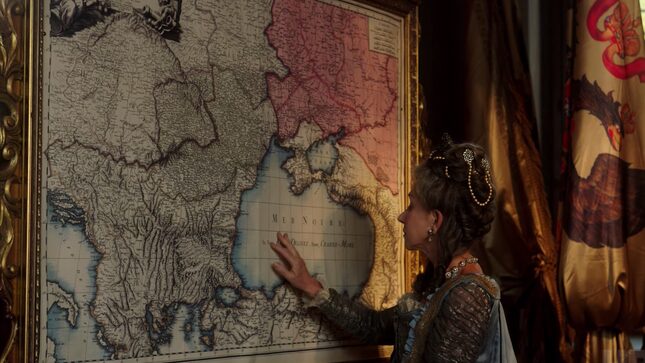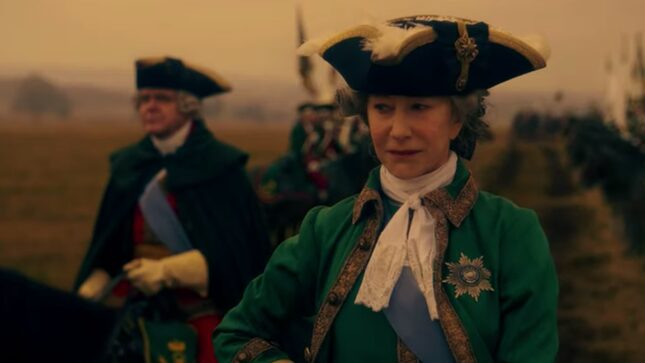
There is perhaps no purer illustration of the term “costume porn” than a miniseries about Catherine the Great, starring Helen Mirren. On Monday night, HBO premiered a four-part limited series on the glory days of the famous Russian empress—or maybe infamous is a better way to put it. The costumes are appropriately show-stopping, which is fitting, considering that over-the-top luxurious clothing is a time-honored means of all-powerful rulers flexing their might and majesty. For a figure like Catherine the Great, lavish clothing isn’t just a perk; it’s a tool.
In advance of the show, I spoke to Catherine the Great’s costume designer, Maja Meschede, about the production. We talked about what makes an 18th century court costume look Russian, whether they cheat and tuck velcro into all those elaborate gowns, and what happens to the clothes once the production packs up and goes home. Our interview has been condensed and lightly edited.
JEZEBEL: What drew you to the production? 18th century costume—especially 18th century imperial Russian costume!—is a big project and very specific. What drew you to the job?
MAJA MESCHEDE: Well, first of all, I love the director, Philip Martin. I’ve always admired his work, and I was just really thrilled when he asked me to come onboard. Secondly, 18th century Russia is just so splendid, and it’s very different to the 18th century court of France or England or any other continental court at the time. It’s very, very different in terms of style and colors, and I was really excited to explore and research.
What was the biggest challenge or the hardest part of outfitting this specific and this large of an 18th century costume production?
The big challenge was that we really had a very short amount of time. We were producing this in Lithuania, in Vilnius, and we had basically from July to the beginning of September to make about 60 different costumes for Helen Mirren alone. It’s not a big-budget production. I think we created about 3,000 different styles of costume for the whole show, and I think people worked really hard and everybody created something really wonderful and special.
We needed to think through the essence of what makes people look Russian. Why do people on Russian portraits look so different from portraits being painted in England by Gainsborough for example?
How do you decide how much of it you have to make? Can you rent part of it? Is there a company that you can go to and say, “We need 300 pairs of shoes?” Or do you really have to make the whole production from scratch?
We didn’t make everything from scratch. For most of the principle actors, we made everything from scratch. We also hired costumes, of course, in Italy. In Rome especially, there are beautiful costume houses where you can get the most amazing 18th century costumes. As I’ve said before, 18th century Russia is very different to the courts of England or, let’s say, France and Germany, and therefore it’s so specific that it had to be made, to actually tell the story in the way we wanted to tell it and portray the characters to be really, truly Russian. We needed to think through the essence of what makes people look Russian. Why do people on Russian portraits look so different from portraits being painted in England by Gainsborough, for example?
It gives you a lot of control. The color palette was really important. For Helen Mirren, there were lots of beautiful pastoral blue colors, shades of gold, silver. And there’s the army of Catherine the Great—they’re called the Preobrazhensky Guard, they are her imperial guard—and we dyed fabric a very specific red, a very specific green, just to make sure we portray the story as well as we could, to be as authentic as possible.
-

-

-

-

-

-

-

-

-

-

-

-

-

-

-

-

-

-

-

-

-

-

-

-

-

-

-

-

-

-

-

-

-

-

-

-

-

-

-

-










































